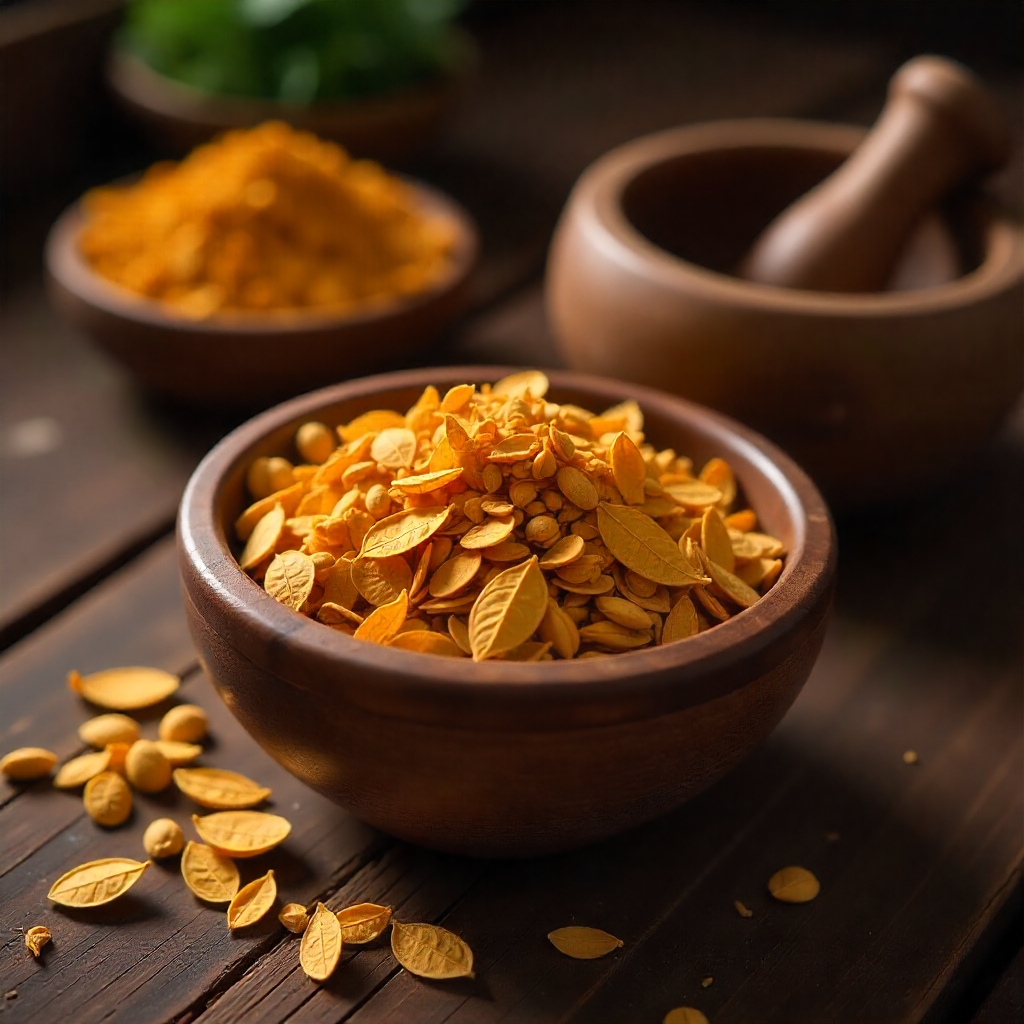Imagine a lush green shrub growing in the corner of an old Indian courtyard. Its long, lance-shaped leaves carry a faint bitterness, and yet they’ve been cherished for centuries as a healer’s gift. This is Adhatoda (Justicia adhatoda), also known as Vasaka or Malabar Nut. Native to South Asia and widely found across India, Nepal, and Sri Lanka, this evergreen shrub thrives in warm climates and is often seen in Ayurvedic gardens. With small white flowers tinged with purple and medicinally potent leaves, Adhatoda has secured its place as one of the most respected herbs in traditional medicine.
Why Adhatoda Matters Today, For generations, people have relied on Adhatoda as a remedy for coughs, asthma, bronchitis, and other respiratory troubles. In fact, many modern cough syrups still draw from its active compounds like vasicine and vasicinone, which are known to relax bronchial muscles and ease breathing. At a time when respiratory health has become a global concern, rediscovering Adhatoda feels more important than ever. It connects you with the wisdom of ancient healers, offering a natural ally for your lungs, immunity, and overall well-being.
7 Best Alternatives to Adhatoda
While Adhatoda is powerful, other herbs also support respiratory health and immunity. Here are seven widely respected alternatives:
- Tulsi (Ocimum sanctum) – Known as Holy Basil, Tulsi is revered in Ayurveda for boosting immunity and treating respiratory infections. Found across India and Southeast Asia, it’s a household remedy for coughs and colds.
- Licorice Root (Glycyrrhiza glabra) – Sweet and soothing, licorice root is used in Unani and Traditional Chinese Medicine. Popular in the Middle East, Central Asia, and Europe, it helps reduce throat irritation and inflammation.
- Ginger (Zingiber officinale) – A kitchen staple worldwide, ginger’s warming properties make it a go-to remedy for sore throats and congestion. Widely grown in India, China, and Africa, it’s both a spice and a healer.
- Peppermint (Mentha × piperita) – Known for its cooling menthol effect, peppermint clears nasal passages and soothes coughs. Commonly grown in North America and Europe, it’s used in teas, balms, and inhalations.
- Eucalyptus (Eucalyptus globulus) – Native to Australia, this tree’s oil is famous for relieving congestion and improving breathing. Today, eucalyptus plantations thrive in India, Africa, and South America.
- Mullein (Verbascum thapsus) – A European and American favorite, mullein leaves have been used in teas and tinctures to ease chest congestion and bronchitis.
- Thyme (Thymus vulgaris) – Grown in Mediterranean regions, thyme has antimicrobial properties and supports lung health. It’s commonly used in both cuisine and herbal medicine.
When and Where
Adhatoda’s story is deeply rooted in South Asian landscapes and traditions. Traditionally, the plant is harvested when its leaves are fresh and full of active compounds, often during the late winter and early summer months. Families and village healers would pluck the leaves, dry them, and store them for year-round use.
Adhatoda is commonly found in India, Nepal, Sri Lanka, and Burma, thriving in plains, foothills, and even forest edges. It grows wild, but it is also cultivated in herbal gardens and Ayurvedic farms.
Sourcing Adhatoda has always been community-driven. In earlier times, grandmothers crushed fresh leaves to prepare syrups for children with coughs, while traditional healers boiled them into decoctions. Today, herbal companies process Adhatoda into extracts, syrups, tablets, and teas—bridging the old with the new.
There are also related species, such as Adhatoda beddomei, known for similar properties but used less widely. Each variety carries the plant’s signature bitter yet healing energy, reminding us of its enduring role in both local traditions and modern medicine.
Who Uses Adhatoda?
Adhatoda has been a pillar of Ayurvedic medicine for centuries. Ayurvedic healers used it primarily for treating respiratory ailments, coining it “Vasaka” in Sanskrit texts like Charaka Samhita and Sushruta Samhita.
In Unani medicine, it has been prescribed as a bronchodilator and expectorant. Across rural India, village healers still prepare fresh remedies from its leaves for those suffering from asthma or chronic coughs.
Beyond South Asia, communities in Sri Lanka, Pakistan, and Bangladesh also rely on Adhatoda. Even today, in many Indian homes, a parent might crush its leaves into juice and mix it with honey for a child’s stubborn cough. It is not just a herb—it’s part of family care and cultural memory.
Why Use Adhatoda?
People turn to Adhatoda for many reasons:
- Respiratory Relief – Its alkaloids relax bronchial muscles, making it easier to breathe during asthma, bronchitis, or severe colds.
- Cough & Cold Remedy – As a natural expectorant, it clears mucus and soothes the throat.
- Antimicrobial Action – Traditional healers believe it prevents infections by strengthening immunity.
- Fever & Inflammation – In Ayurveda, it is also used to manage fevers and inflammation.
- Cultural Significance – More than just a medicine, Adhatoda symbolizes nature’s role in protecting human health, linking generations through shared remedies.
Which Parts of Adhatoda Are Used?
Almost every part of Adhatoda carries healing power:
- Leaves – Most commonly used for making teas, decoctions, and syrups for cough relief.
- Roots – Used in traditional preparations for fever and respiratory blockages.
- Flowers – Sometimes included in herbal infusions for their mild expectorant properties.
- Stem Bark – Less common but used in classical Ayurvedic formulations.
The leaves, however, remain the star of the plant—packed with vasicine, the alkaloid responsible for its medicinal strength.
How to Use Adhatoda?
Adhatoda has traveled from clay pots of village healers to modern herbal pharmacies, but its uses remain familiar:
- Adhatoda Tea/Decoction – Leaves are boiled in water, sometimes mixed with ginger and honey, to soothe coughs.
- Syrups – Popular in Ayurveda-based pharmacies, especially for children and elderly.
- Poultices – Crushed leaves are applied externally to reduce inflammation.
- Extracts & Capsules – Modern supplements provide measured doses of Adhatoda for respiratory health.
Precaution: While generally safe, Adhatoda should be avoided in pregnancy as it can stimulate uterine contractions. Always consult a healthcare professional for regular use.
Important Facts About Adhatoda
- Botanical Name: Justicia adhatoda
- Family: Acanthaceae
- Active Compounds: Vasicine, vasicinone (bronchodilatory and expectorant properties)
- Traditional Texts: Mentioned in Ayurveda, Unani, and Siddha medicine
- Scientific Research: Modern studies confirm its bronchodilator, antimicrobial, and anti-inflammatory effects.
- Side Effects: Not recommended during pregnancy; excessive doses may cause nausea or irritation.
FAQs on Adhatoda
1. Is Adhatoda safe to use?
Yes, when taken in moderate amounts as tea, syrup, or extract. Pregnant women should avoid it.
2. Can Adhatoda help with asthma?
Yes. Its compounds relax the airway muscles, making breathing easier for asthma patients.
3. Where can I buy Adhatoda?
It is available in Ayurvedic pharmacies, herbal stores, and online in forms like syrups, teas, and powders.
4. How fast does Adhatoda show effects?
Relief from cough and congestion can often be felt within a few doses of syrup or tea.
5. Are there known drug interactions?
It may interact with strong bronchodilators or respiratory medications. Always consult a doctor before combining.
6. Can children use Adhatoda?
Yes, in small doses like syrups or honey-leaf juice mixtures, but under adult guidance.
Conclusion
Adhatoda (Justicia adhatoda) is not just an herb—it’s a bridge between ancient wisdom and modern health needs. From the pages of Ayurvedic texts to today’s cough syrups, it has consistently proven its worth as a natural remedy for respiratory health.
When you think of a grandmother crushing its bitter leaves into honey for a child, or an Ayurvedic doctor prescribing Vasaka decoction for asthma, you realize this herb is woven into cultural memory and healing traditions. Today, as respiratory wellness takes center stage, Adhatoda is stepping back into the limelight—this time with scientific validation.
If you’re looking for a natural ally for your lungs and immunity, Adhatoda may be the gentle yet powerful support you’ve been searching for. As always, use it wisely, consult professionals, and let this ancient green healer remind you of the timeless bond between nature and your health.


